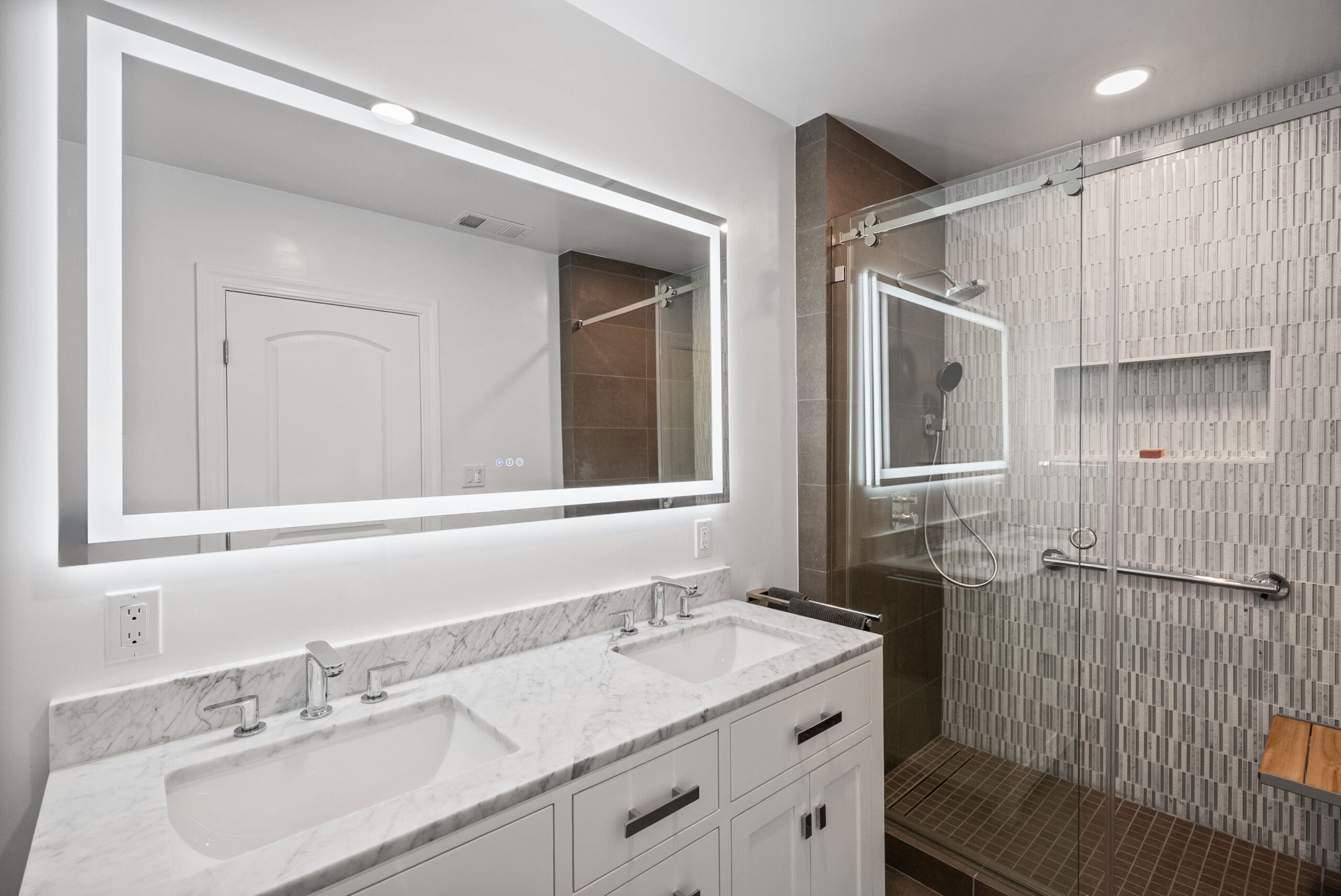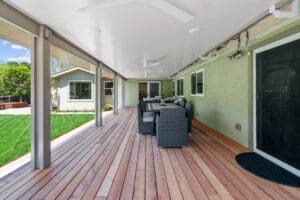The Great Upward Quest: Is Adding a Second Story Your Bay Area Dream?
Alright, let’s talk. We’re all living the same reality here in the Bay Area. We love our neighborhoods, the vibe, the location… but our homes? Sometimes they feel like they’re bursting at the seams. Maybe the kids are sharing a room like a couple of friendly sardines, or you’ve started eyeing the living room as a potential home office/bedroom/yoga studio. Sound familiar?
When you’re out of space but you’re deeply rooted in a community you love in places like Walnut Creek or Danville, you basically have three choices: move (and face the eye-watering cost of a new place), build out (if you have the land), or build up. Today, we’re pulling out the ladder and having a real, no-B.S. chat about that third option: adding a second story. Is it the brilliant solution to all your problems, or a Pandora’s Box of construction chaos? Let’s climb up and find out together.
The Sunny Side of the Street: The Glorious Pros of Going Up
Let’s start with the good stuff, because frankly, it’s pretty exciting. Building up isn’t just about adding square footage; it’s about transforming how you live in your home.
You Get to Stay Put (And That’s Priceless)
The biggest win? You don’t have to leave. You get to keep your killer location, your amazing neighbors, and the schools you fought to get into. You avoid the soul-crushing process of bidding wars and the monumental hassle of packing up your entire life. In a market like ours, that peace of mind is often worth its weight in gold.
Seriously Maximize Your Property’s Value
From a pure investment standpoint, a well-executed second-story addition is often a home run in the Bay Area. You’re not just adding a bedroom; you’re fundamentally upgrading the entire home’s footprint and potential. It’s one of the most impactful forms of whole house remodeling you can undertake. When done right, it can catapult your property into the realm of luxury home renovations, significantly boosting your equity.
A Clean Slate for Your Dream Layout
This is the really fun part. You’re not just tacking on a room; you’re redesigning your home’s entire flow from the ground up. This is your chance to create that dream primary suite with a walk-in closet and a spa-like bathroom. You can design a dedicated office, a playroom for the kids, or a guest retreat that will make your in-laws actually want to visit. IMO, this is where the magic of custom remodels truly shines.
Those Views, Though
If you’re in a spot with even a sliver of a view, a second story can unlock it. Suddenly, that peek of the hills in Danville or the Oakland skyline becomes a central feature of your daily life. Waking up to that every morning? Yeah, that’s a pro you can’t really put a price on.
The Reality Check: The Not-So-Glamorous Cons
Okay, take a deep breath. We’ve been riding the high of possibility, but we need to land the plane and talk about the real-world challenges. This isn’t a simple weekend project, after all.
The Sticker Shock is Real
Let’s not mince words: this is one of the most expensive types of home remodeling you can do. We’re not talking about a simple bathroom remodeling project here. The cost involves structural engineering, new foundations, a new roof, stairs, and often updating major systems throughout the entire house. It’s a significant financial undertaking.
You’re Essentially Building a New House on Top of Your Old One
This isn’t just cosmetic work. A second-story addition is major structural surgery. We have to ask: Can your existing foundation and walls support the new load? Often, they need to be reinforced, which is a massive job in itself. This is where you desperately need an expert home improvement team who knows their stuff.
The Relocation Conversation (And I Don’t Mean Moving)
Here’s a question we get all the time: “Can we live in the house during construction?” The honest answer? It’s… tough. For significant portions of the project, you might be without a kitchen or bathrooms. There will be dust, noise, and a giant hole where your new staircase is going. Many families choose to move out temporarily. It’s a major lifestyle disruption, and you need to be ready for it.
The Permitting Puzzle
Ah, Bay Area permits. A thrilling adventure in patience and paperwork! Every city—from Oakland to Walnut Creek—has its own rules, zoning laws, and design review boards. Navigating this bureaucracy is a project in itself and can add considerable time to your schedule. This is one area where an experienced general contractor really earns their keep.
So, Is Your Home a Good Candidate? Let’s Get Technical.
This is the million-dollar question, isn’t it? Not every single-story home is begging for a second level. Here’s a quick, down-and-dirty look at some of the key technical factors we evaluate.
The Foundation of it All (Pun Intended)
The foundation is the single most critical element. Most older homes here were built on a perimeter foundation, which often needs significant reinforcement or even a complete replacement to support a second story.
The Roof, The Walls, The Everything Else
We also need to assess the current framing, the condition of the first-floor walls, and the overall structural integrity. It’s a full diagnostic before we can even think about drawing up plans.
To break this down a bit more clearly, here’s a useful table comparing the two main foundation scenarios we often encounter:
Foundation Scenarios for a Second-Story Addition
| Scenario | What It Means For You | Typical Level of Intervention |
|---|---|---|
| Adequate Existing Foundation | Your current foundation (often a newer, reinforced perimeter or slab) is structurally sound and designed to handle the additional load. | Minimal to moderate. An engineer will still need to certify it, but you might avoid a full foundation rebuild. |
| Inadequate Existing Foundation | Your foundation (common in older homes) cannot support the weight and seismic demands of a second story. | Major. This requires a full foundation replacement or underpinning, which is a massive and costly part of the project. |
Seeing it laid out like that makes it pretty clear, right? This is why the initial consultation and engineering assessment are so crucial.
Let’s Talk Logistics: The Nitty-Gritty You Can’t Ignore
Beyond the structure, there are some very practical considerations. Ever thought about where the stairs will go? It’s a spatial puzzle that can make or break your first-floor layout. And then there’s the mess. We’re talking about a level of dust that would make an Egyptian tomb look tidy. You’ll be sealing off rooms, and your driveway will become a temporary lumberyard.
And your neighbors? A little heads-up goes a long way. A good remodeling company will help you manage those relationships and ensure the site is safe and as tidy as possible. It’s just part of being a good neighbor.
How This Compares to Other Renovation Paths
So, why choose this over, say, a basement remodel or a single-story bump-out?
- Vs. a Basement Remodel: If you have a basement, converting it is often a more affordable way to gain space. But let’s be real, a dark, below-ground room can’t compete with the light and views of a second story. It’s a different class of living space entirely.
- Vs. a Bump-Out Addition: A ground-floor addition is great, but it eats into your precious yard space. If your lot is small, going up is your only real option to significantly increase square footage.
Your Burning Questions, Answered
We have these conversations every day, so let’s tackle the big ones head-on.
FAQ: Your Second-Story Questions, Demystified
1. How long does a typical second-story addition take?
From the first drawing to the final walkthrough, you’re typically looking at 6 to 12 months. A big chunk of that is the design and permitting phase. The actual construction might be 4-6 months, but the pre-work is extensive. Patience is not just a virtue here; it’s a requirement.
2. Will I need to update my entire first floor too?
It’s highly likely, and honestly, we recommend it. Think about it: you’re adding a grand new staircase. It’s going to look pretty funny leading up from a 1970s kitchen, right? Most clients use this as an opportunity to also tackle that kitchen remodeling project or update the main-floor bathroom remodeling. It ensures the old and new parts of the house feel cohesive.
3. How do I find a reputable contractor for such a big job?
This is the most important question. You don’t just search for a home addition contractor near me and pick the first one. You need a home renovation contractor with a proven portfolio of successful second-story projects. You need to read their reviews, verify their insurance and licenses, and, most importantly, feel a sense of trust. This is a long-term relationship.
Making the Dream a Reality (Without the Nightmare)
So, where does this leave us? Adding a second story is a monumental undertaking. It’s expensive, disruptive, and complex. But for the right home and the right family, the payoff is absolutely transformative. You get a custom-designed home in the neighborhood you love, with a massive boost in property value.
If you’re in Contra Costa County and this conversation has your wheels turning, this is where we come in. At EA Home Builders, this is our specialty. We live and breathe complex projects like second-story additions and whole house remodeling. We’ve navigated the permit offices in Walnut Creek, Danville, and Oakland more times than we can count. We handle the scary structural stuff, manage the chaos, and turn your vision into a built reality.
You don’t have to navigate this upward quest alone. Let’s have a real conversation about your home, your goals, and your budget. Give EA Home Builders a call. We’re your nearest local experts ready to help you build your dream home, right where it already stands.






